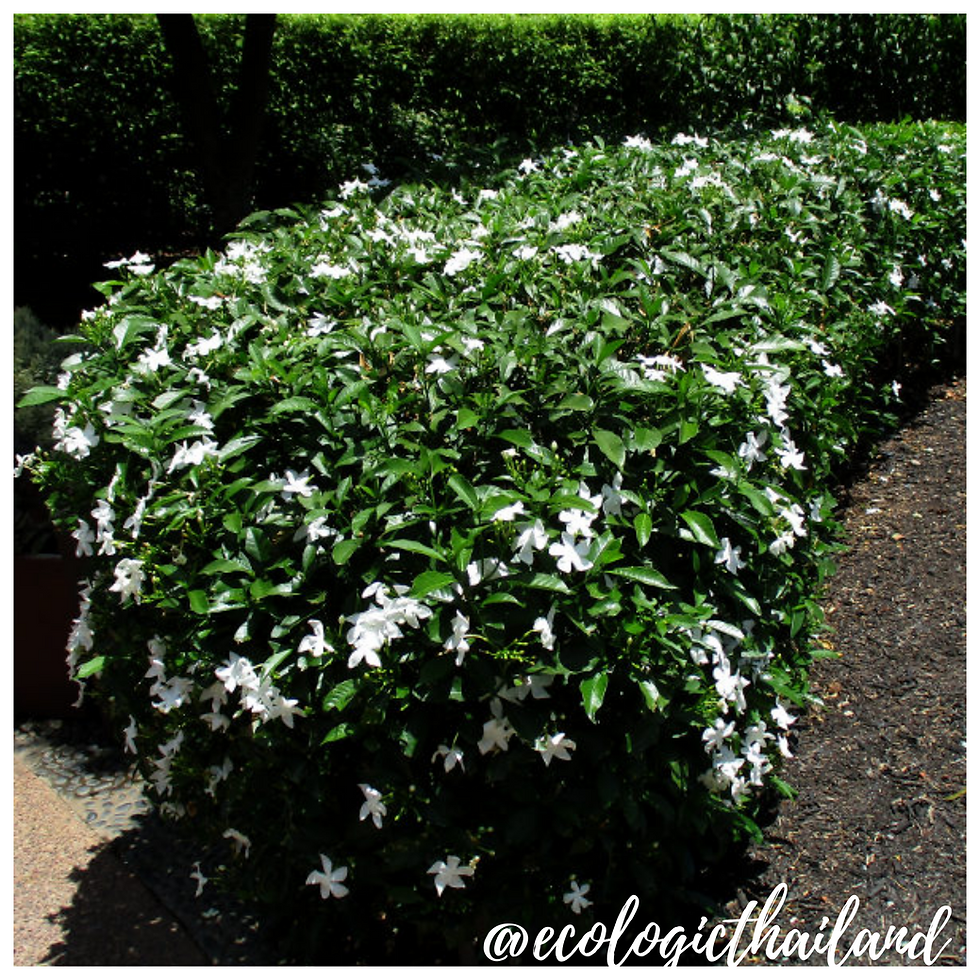Rangoon Creeper
- Eco-Logic Resort
- Jan 5, 2021
- 2 min read
Lepmuenang | เล็บมือนาง | Combretum indicum
Family: Combretaceae - Genus: Combretum

The Rangoon Creeper can be found on the premises of Eco-Logic Thailand.
The Rangoon creeper is a a vigorous, fast-growing, evergreen, deciduous, sub-woody vine with white, pink and red flower clusters. It can reach from 2.5 meters to up to 8 meters.
The flowers change in color with age and it is thought that this is a strategy to gather more pollinators. The flower is initially white and opens at dusk. This attracts hawkmoths with long tongues for pollination. On the second day it turns pink and on the third it turns red attracting day flying bees and birds. The flower also changes from a horizontal orientation to a drooping pose.
The beautiful flowers of the Rangoon Creeper can be seen from March to May.

THE PLANT
Rangoon creeper is climber or scrambling shrub that normally grows about 3–8 m tall with pubescent terete branches. The plant is found growing in rain forests, low woods, thickets, hedges, mountains, dry hillsides, riversides, roadsides, woodlands, disturbed habitats, rice fields, in secondary forests, along edges of primary forests, wasteland and railway tracks.
The Rangoon Creeper has cylindrical stems that are green and softly hairy when young, becoming woody with age.

THE LEAVES
The leaves are elliptical with an acuminate tip and a rounded base. They grow from 7 to 15 centimeters and their arrangement is opposite.

THE FLOWERS
The flowers are fragrant and tubular.
The flowers change in color with age and it is supposed that this is an approach to gather more pollinators. The flower is initially white and opens at dusk. This attracts hawk moths with long tongues for pollination. On the second day it turns pink and on the third it turns red attracting day flying bees and birds. The flower also changes from a horizontal orientation to a drooping pose.

THE FRUIT/SEEDS
The 30 to 35 mm long fruit is ellipsoidal and has five prominent wings.
Fruits are initially red turning to dark chestnut brown when ripe.
Ripe seeds are reported as sweet and pleasant to eat if the seed coat is removed. The fruit tastes like almonds when mature.
CULINARY USES
The showy, tubular, white to reddish flowers are very fragrant, with a delightful musky scent.
The flowers are edible, with little flavor, they can be mixed into salads to add color. Or dipped into batter and made into a 'flower-fritter' dish with a sweet spicy dip.
Seeds are edible when mature and taste like almonds.
TRADITIONAL MEDICINAL USE
NOTE: please take advice from a doctor if you are planning to use herbal medicine.
The entire plant is used medicinally for many ailments, especially the seeds, which are well known in Asia.
Seeds are said beneficial for diarrhea, parasitic skin infections, rheumatism, toothache, abscesses, cough, diarrhea, headaches, nephritis, treats roundworm and pinworm.
INTO THE WILD: a down to earth experience

For guests and visitors to Paksong we organize weekly tours "The Edible Forest" and Foraging weekends: Into the Wild. We work with local guides to take you in the jungle of Paksong. After foraging, we will cook a meal with the ingredients, using bamboo together with you!
Come and join and learn about the abundance of food that nature gives us!
INTO THE WILD!


















Comments